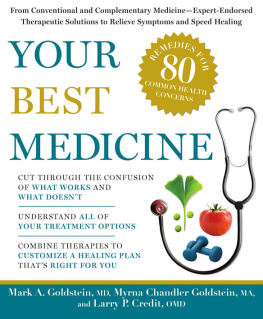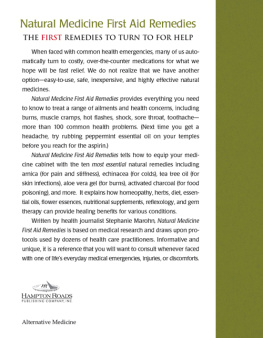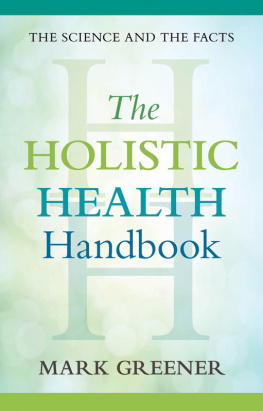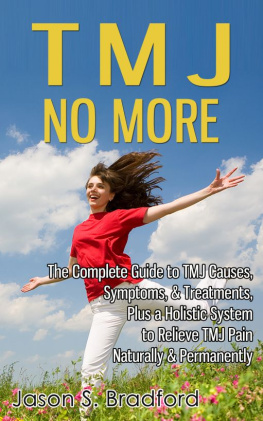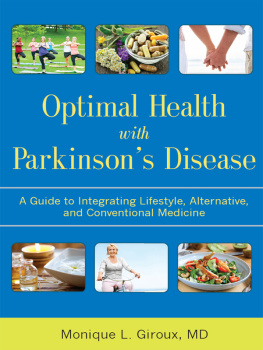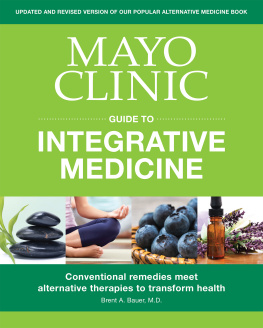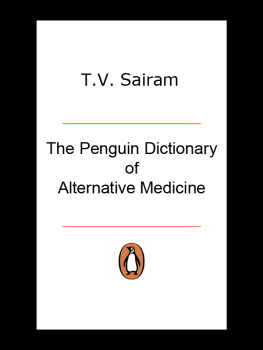To our children, Brett, Samantha, and Sarah, whose work in law enforcement, medicine, and public health will help improve the lives of countless members of society.
In loving memory of our parents, Samuel, Jean, Craig, and Sarah, whose lives were shortened by heart disease and cancer.
Mark A. Goldstein and Myrna Chandler Goldstein
To my family, friends, and patientswith thanks for your continued support and guidance.
Larry P. Credit
Contents
Every week consumers like you hear or read reports of medical advances that may leave them wondering what truly is the best in diagnosis and treatment. Just a few examples:
- An article in a recent issue of the NewEngland Journal of Medicine compared the ability of computed tomographic colonography (CTC) and traditional colonoscopy to detect advanced colon polyps that could lead to colon cancer. The two screening techniques were equally accuratebut the CTC is much more comfortable for patients, which means that it may be a better option.
- A study published in the Archives of GeneralPsychiatry attempted to discern the best treatment for adolescents with depression. It turned out to be not one treatment but, rather, a combination of drug therapy (with fluoxetine, or Prozac) and cognitive behavioral therapy.
- For an article in the journal Nature, researchers at Massachusetts General Hospital described how capsaicinthe active ingredient in chili peppershelps relieve pain, including after surgery. Their report cites scientific evidence to demonstrate that capsaicin, which has a long history as a complementary treatment, actually works.
In writing this book, one of our goals has been to sort through evolving and sometimes conflicting health information, to help identify what truly is best in terms of effectiveness, accessibility, safety, and cost. Weve taken the broadest view of the options, presenting conventional and complementary treatments for 81 common health concerns. To compile this information, we have drawn on prestigious medical journals such as the New England Journal of Medicine, the Journalof the American Medical Association, and Lancet as well as reliable clinical resources such as UptoDate (www.uptodate.com) and the BMJ Clinical Evidence Handbook. Two of us have also drawn on our collective clinical experienceDr. Goldstein as an allopathic or conventionally trained physician who is a division chief at Massachusetts General Hospital in Boston and Dr. Credit as an oriental medicine doctor (OMD) who maintains a private practice at Sancta Maria Hospital in Cambridge, Massachusetts.
We should note at the outset that compared to conventional treatments, which must undergo extensive testing prior to going on the market, complementary treatments seldom are subject to the same level of clinical evaluation. This doesnt mean they dont work; in fact, many have hundreds if not thousands of years of anecdotal evidence to demonstrate their therapeutic properties. It does mean you (and your doctor) should carefully weigh all of your options when deciding on a treatment plan. Take care not to assume that a complementary treatment is safer, and therefore better, simply because its natural.
Getting Around
If youve scanned the table of contents, you already know that weve organized our book into two parts, each of which serves a distinct purpose. Part 1 reviews the principles of good health maintenance, such as when to get key medical screenings and how to recognize life-threatening medical emergencies. It also offers brief descriptions of the various conventional and complementary therapies, which will provide a framework for the information in Part 2.
The condition entries in Part 2 account for the lions share of the book. With a handful of exceptions, each entry offers the following:
- A general overview of the condition, including its causes and risk factors
- A list of signs and symptoms
- Conventional treatments
- Complementary treatments
- Lifestyle recommendations
- Preventive measures
Weve structured the entries in this way in order for you, the reader, to have quick and easy access to the information you need, as soon as you need it. Lets say youre returning home from a visit to your doctor, who told you that you have high blood pressure. Just turn to the appropriate page in this book, and there youll find out why youre a candidate for high blood pressure andperhaps more importantwhat you can do about it. After reviewing your options, you may want to follow up with your doctor to find out if you really need a beta-blocker to rein in your blood pressure, or if you first could try a combination of diet, nutritional supplements, herbs, and relaxation techniques.
If you want to learn more about high blood pressure, you can flip to the resources at the back of the book for a listing of organizations that can provide further information and support. Weve also included a listing of professional associations for the various complementary therapies, many of which can help direct you to qualified practitioners in your area. We realize that while finding a conventionally trained physician (an MD or DO) is rather easy, the same may not be true for complementary practitionersacupuncturists and reflexologists, for example. Certainly, convenience should be a consideration when youre deciding whether to try a particular complementary therapy.
Before You Proceed
Weve done our best to make this book as upto-date, authoritative, and complete as possible. In turn, we encourage you to use it wisely and responsibly. To this end, we offer the following caveats.
- Please exercise your best judgment in deciding when to seek your physicians advice and when to try self-care. For example, you probably can handle a bout of garden-variety constipation on your own. But if it persists, or its exceptionally painful, or its accompanied by blood in the stool, then it requires medical intervention. Some symptoms or conditions, like chest pain, should be checked out by a physician as soon as possible. Pay attention to your bodys internal and external cues; then youll learn to recognize when something unusual is going on, and youll be able to respond accordingly. When in doubt, call your doctor. As the saying goes, its better to be safe than sorry.
- Do not discontinue any conventional treatment, or replace it with a complementary treatment, without first consulting your physician. If you are taking a medication, for example, reducing the dosageor going off the drug completelycan have serious health implications. So can adding an herbal or nutritional supplement, which could undermine a medications intended effects. We believe that conventional and complementary therapies can coexist in a treatment plan; in cases of chronic illness, in particular, an integrated approach to care may offer the best chance for alleviating symptoms and improving quality of life. But you and your doctor should work together to determine the best course of treatment.
- As thorough and accurate as weve attempted to be in our reporting, we really cant advise you on your particular condition without knowing you and your health history. With this book, our purpose is to inform and educate, so you (and your doctor) can make intelligent decisions about your health care. If you believe that you should consult your doctor on a particular matter, by all means do. Caution and common sense can make all the difference in your treatment outcomes.
We hope that you find our book to be a helpful guide on your journey to complete healing and optimal health.
Mark A. Goldstein, MD, Myrna ChandlerGoldstein, and Larry P. Credit, OMD

